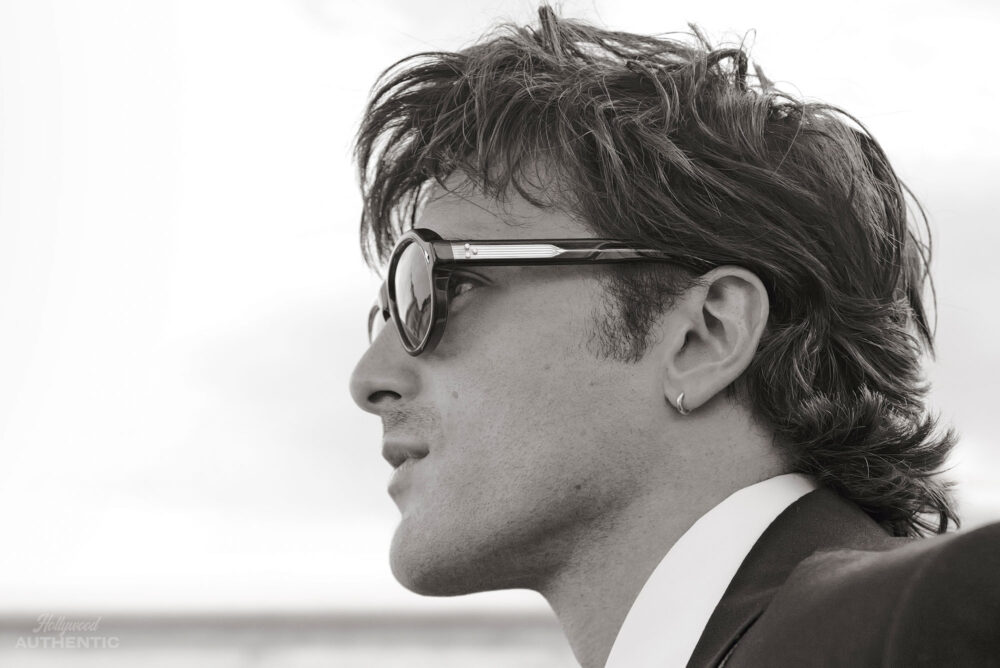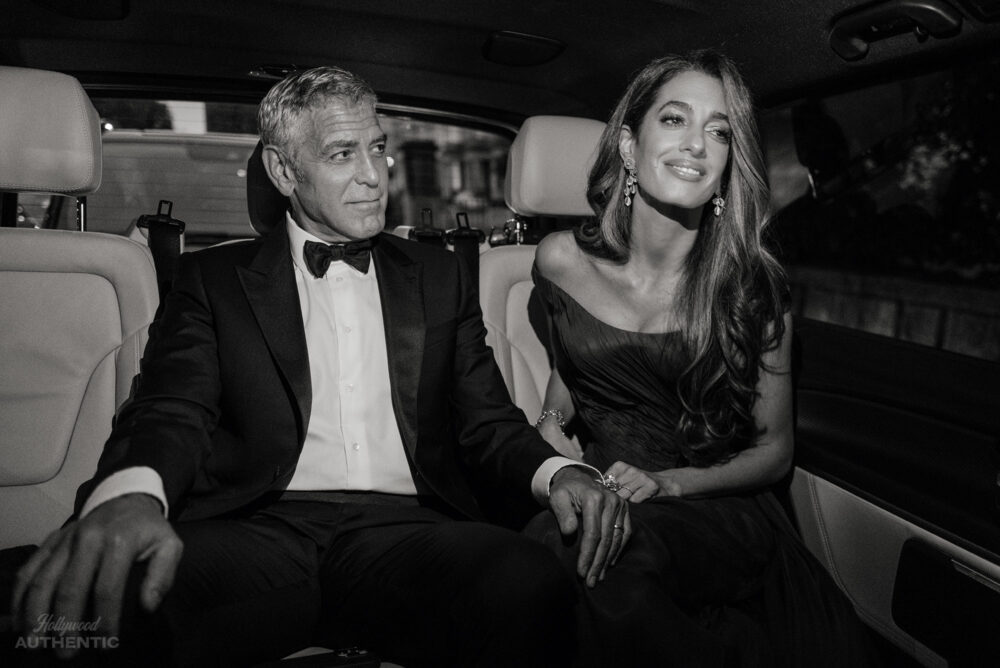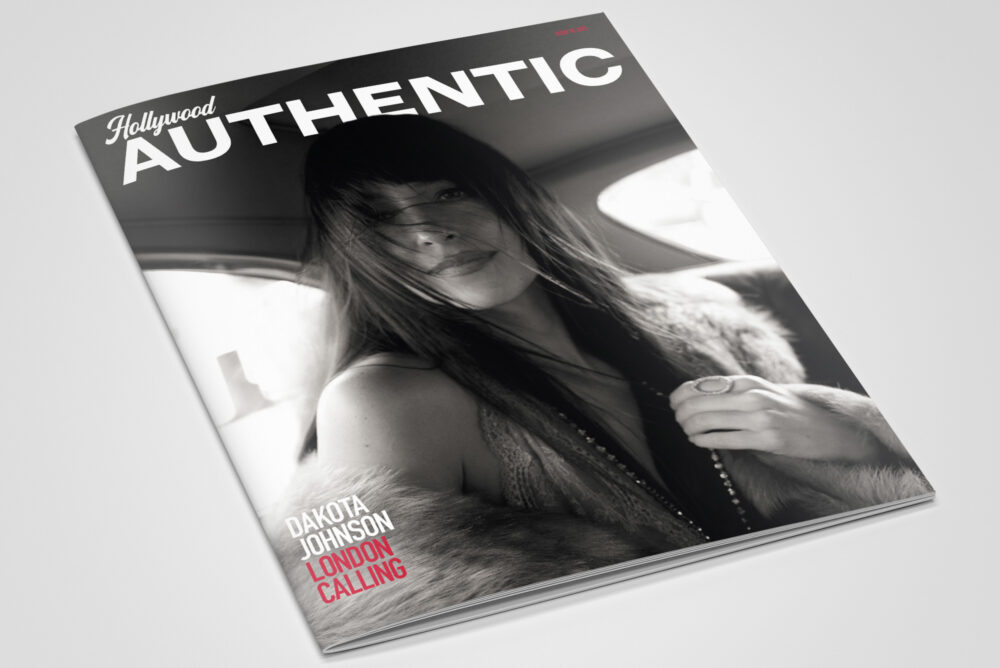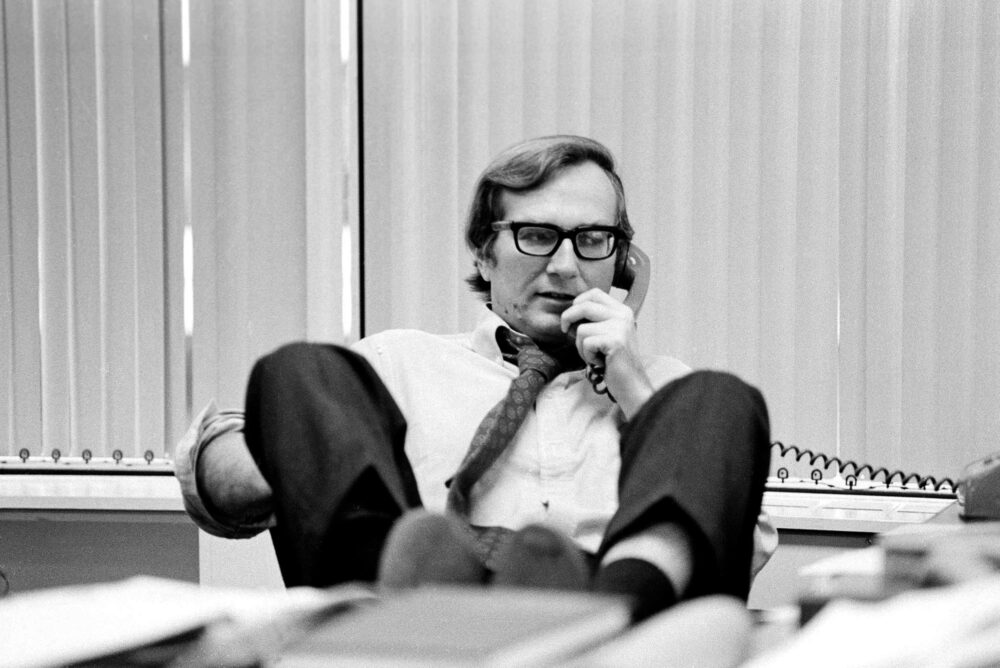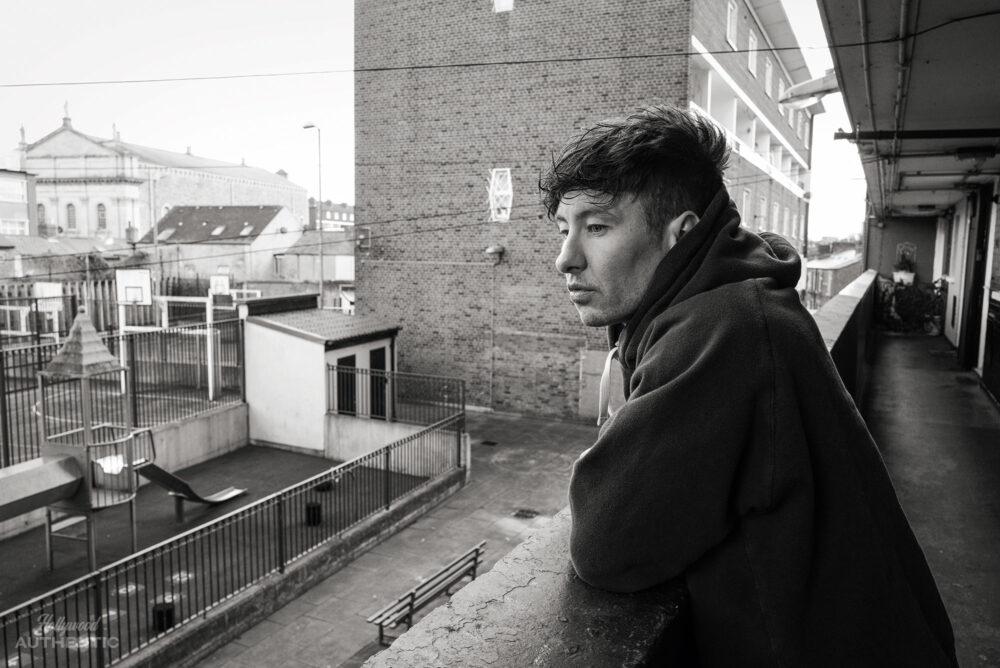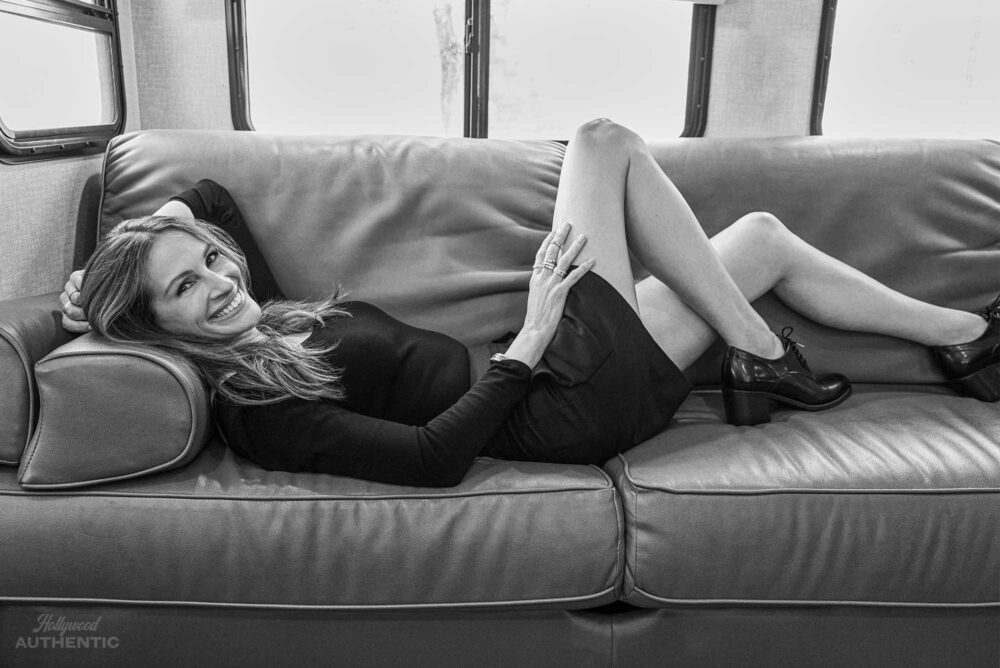Words by CATHERINE MARTIN/ARIANNE PHILLIPS
Introduction by JEREMY LANGMEAD
The highly decorated costume and production designer behind opulent visual feasts such Romeo + Juliet, Moulin Rouge and Elvis talks Arianne Phillips through her career, ChatGPT, parental inspiration and her nemesis on set.
Catherine Martin is a true polymath. She has an extraordinary ability to bring to life, through her award-winning costume, production and set designs, the vision of her partner in life, and in film, the director Baz Luhrmann. Together they had created visually spectacular and compelling storytelling through movies such as Romeo + Juliet, Moulin Rouge, The Great Gatsby and Elvis.
Catherine has had 78 awards nominations and 62 wins, including four Oscars. In fact, she has been nominated for and twice won two Oscars in the same year – costume and production design for Moulin Rouge and The Great Gatsby. The only woman to do so since Edith Head in the 1950s.
Here Catherine, with her trademark modesty and good humour, talks to Arianne about balancing high creativity and daunting logistics, setting boundaries when working with your partner, and raising children to researching Joan of Arc.
AP: Hi Catherine. So great to meet you. We’ve never actually met.
CM: I know. And I’m a huge fan of what you do. I went and saw all the Madonna shows and saw what you did for her, and I just thought, ‘Wow!’
AP: Thank you. Well what I love about you is that you’re a multi-hyphenate – not just a costume designer, production designer, producer, but you’re also an entrepreneur, and you do interiors. I’m so just thrilled to hear about your process and what it’s like having your life partner also be your creative partner. And when do you have time for all this? You also have a family. How did this multi-hyphenate life begin?
CM: Thank you. Well when I was still studying at NIDA (National Institute of Dramatic Arts) in Sydney I worked on set design and costume projects for the theatre. And so when I met Baz, who had graduated from NIDA just before me, I’d already had experience of both when we started working together on Strictly Ballroom (1992).
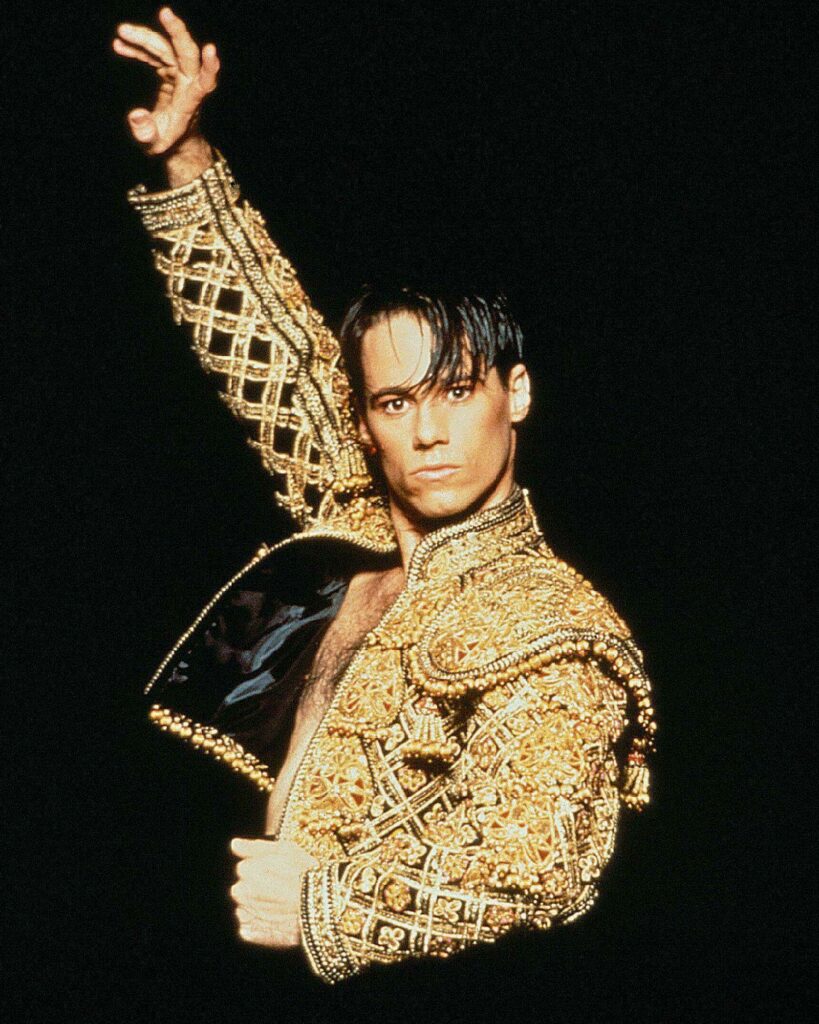
AP: A lot of people don’t understand the tradition that in the theatre, set designers will often also design the costumes. There’s a real fluid flow in theatre and in opera. What I love about your trajectory is that both you and Baz have this real theatre foundation, and it really makes sense that you’re able to continue this type of fluid work between sets and costumes in the films you create.
CM: Absolutely. Baz always says that in film a lot of the time sets are the costumes because 30% of a film is in close-up. And then if you have a big crowd scene, well, the set is kind of obliterated by the crowd – and it is they who create the atmosphere or the milieu in which the story is told. So he’s very focused on everything visual. You know, every single detail he will have a perspective on. Baz is a visualist, and he will have a strong idea of how he wants something to look. He’ll rip pictures out of magazines; he will draw little scribbly pictures that are very helpful; he is now, very scarily, starting to talk to Chat GPT. And what I think is incredible is that I can’t get good pictures out of Chat GPT, but he talks to it like a director and corrects it and then the images actually make sense. I just go, how can you make such great pictures? I’m meant to be somebody who’s a designer and I can barely get it to give me a cat that doesn’t have 6 legs.
AP: It’s a testament to his verbal acumen that he’s able to express aesthetics, because that is a gift and a skill. In my experience most directors are completely unable to express aesthetics, which is so crazy.
CM: He has a really strong aesthetic, obviously. But at the same time, what makes it great is he’s not like, you know, Charlie Chaplin, the great dictator, with a big ball running around his office. He’s actually engaging with you as a true collaborator: ‘now how do we work this out?’ And he doesn’t do it just with design. He’ll do it with music. He’ll do it with movement. He’ll do it with the actors. So what’s rewarding is you’re not just another cog in the wheel. You feel connected to all the other people in the team.
AP: You both have such a strong aesthetic and visual identity, I wonder what movies you loved or that had inspired you when you first started out creating your own stories?
CM: I think the movie that absolutely struck me the most when I was a kid was The Wizard of Oz. I think I first saw it when I was 10. My dad is a huge movie buff. Even though he’s a professor of French, and a specialist in 18th-century French literature, he’s just loved the movies from when he was a child. He was actually a child actor. And he would tell you all about how they did everything – like when someone’s telling you about the special camera they invented for Snow White, the multi-plane camera so that it felt like you were moving through time and space. When you’re a child, it sometimes takes the magic out of it all, but noone could take the magic out, or the fear I had, from those monkeys. I still find them terrifying. And I really wanted those red shoes with the sparkles on them. And I also liked the pale blue socks she wore with the red shoes. I thought it was so ugly, but so good. And this is now very politically incorrect, but you must remember that I was a child when I first saw it, but I was in awe of Gone With the Wind. It was just so enormous and epic.
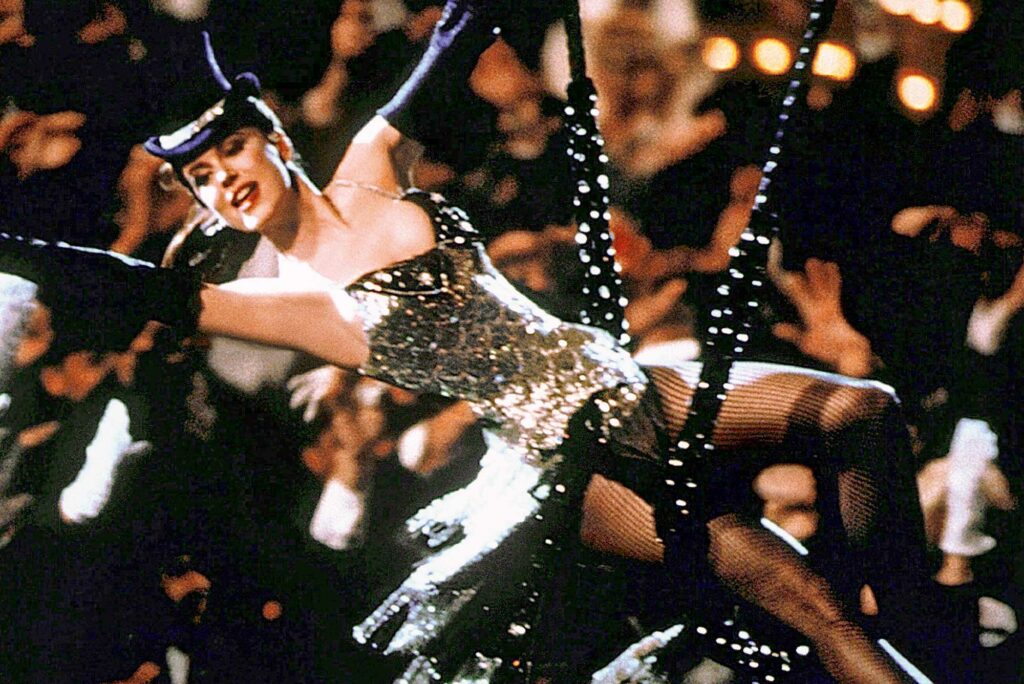
AP: The scale, magic and colours of those epic movies are all reflected in your work. As is the transportive nature of those films – whether it’s through Moulin Rouge or The Great Gatsby. I’m just curious about when you are in the early development phase with your films, and you and Baz have privilege of being partners in life, as well as in film, do you discuss your work at the dinner table… how you come together with your early ideas about the films that you’re deciding to make?
CM: It has to be relatively disciplined because, ultimately, Baz is the decision maker. And we’ve had to learn to have a process for him to discover what he wants to actually make the next time – because he commits hook, line and sinker. So every time we go into that moment he needs to go off on a kind of quest to find that idea that he wants to commit to. And then there’s a process of him telling the larger group the story. So I would be one of the first people to hear that story. And then he would tell our other colleagues. And then he might start talking to the casting director about it in order to start fleshing out the story for himself.
Baz is in a writing mode at the moment, and that’s a very specific and singular thing for him. And whilst he’s on that journey I will do external kind of research. His next project is Jeanne D’Arc and I will obviously read the book on which the story is based and generally research around the subject. We’ve already done some field trips to see various people and places and museums. In fact, I’m going to Rouen tomorrow to see where poor Joan of Arc was burned at the stake. But in earnest, I’ll be invited into the design process in a quite formal way
AP: I get it.
CM: So, yes, we talk about everything and anything. But when you work and live together, you kind of have to have systems in order to create the space for the other person to not trample them creatively. So I know if Baz has a really good chance to brief me, he’ll give me the space and time to give it my best shot, then I’ll be ready to present it to a group. And presenting can be really traumatising because when you present something you actually see all the flaws that were not real to you when you were just sitting in your room by yourself, or with your immediate team, or whatever. But what’s great is that it doesn’t matter if you fail. You just have to go back to the drawing board and give it your best.
AP: Catherine, when you speak about presenting to the group, it’s reminiscent of what we do in theatre, right, or in opera when you present. And I love that process, that structure, because it is exactly what you say: when you do present it’s like reading your writing out loud. Then you understand, ‘oh, I need to work on this more, this doesn’t work’, but that is such a gift. Having done a little bit of opera and a little bit of theatre, I found that that process is nerve wracking, but wholly rewarding. And I am jealous that you have this partnership and this structure that you’re able to do that with your film work. That’s fabulous.
CM: The big advantage with theatre is that you effectively have 100 opening nights, instead of one. Whereas someone could be wearing a terrible wig on opening night in the play, for whatever reason, you can fix it in the run. Once you’ve shot something, you can never change it. Perhaps with visual effects, but costume fixes are a lower priority in that budget. Most people would rather fix a stunt or a building than a costume or a wig.
AP: Yeah, that’s right.
CM: I’m always, like, ‘can you close the shirt? And what about the fact that the sock’s not long enough going up into the trunk?’ I can see these are the things that as costume designers drive us crazy, right? And, oh my god, I wish there was a special erase button for bad shoes. Why is that person with the bad shoes right in the front? Can you put good shoes on?
AP: Ha. Always. How do you manage your team when you are designing sets and costumes, and you’re also a producer…how does that work?
CM: Well, it takes me nearly to the brink of a nervous breakdown. And in fact, although it was only partially to do with work, but a combination of COVID, two children in their late teens, my mother breaking a hip, and so much to do that I actually did have a bit of a nervous breakdown…
AP: I’m sorry to hear that.
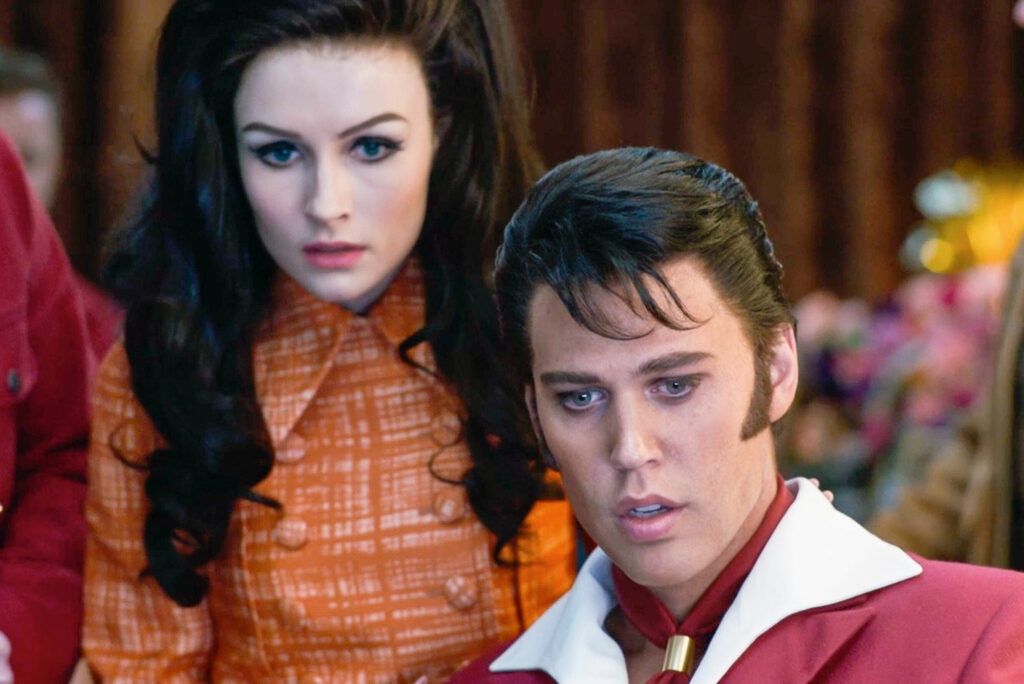
CM: It was just a lot. So, you know, Elvis wasn’t a perfect journey because I really did become extremely depressed at one point. And you don’t realise that that’s happening to you. It’s just like the oxygen’s being taken out of the room in tiny little gulps. And one of our children was having, you know, suicidal ideation. They’re totally fine now. That’s the thing about children, that one minute it’s like the end of the world for them, and then they turn around and say ‘that’s over now, I’m good’. I wish I was as resilient. So it’s not perfect, you know, all the time. And I think that was just a really tough period. And I underestimated too how much work Elvis would be. Initially I thought the movie might be a bit of a psychological rest because we were not world-building from scratch, we were recreating one. But, of course, it wasn’t like that at all. It was world-building and there were around 9,000 complete outfits. And sometimes I just felt like I was in Indiana Jones and there was a giant ball coming behind me. And I kept thinking ‘how can there be 105 speaking parts?’ And I was a producer. And I would go to my fellow producers and colleague, Schulyer Weiss – because his creative area is casting – can you cut some of these parts because there aren’t enough clothes in the world!
AP: Wow, I can imagine. This Bob Dylan movie I just did, A Complete Unknown, had 120 speaking parts. It’s a lot.
CM: It is. Since Elvis, however, things have changed so much. Both kids are at university; they have their own lives; one is living at home at the moment, and the other one lives three minutes away in an apartment. And it means I’ve just had more creative opportunity this year in a way that I haven’t before because, you know, I’m now less tied to the children. I love my children. Best thing I ever did. But you go through this weird seesaw moment where you go, ‘oh my god, they’re leaving home. The whole meaning of my life has been removed. This is a disaster’. And then you go, ‘oh, freedom, freedom!’
AP: Ha. Because, as you’ve alluded to, there are so many logistics to plan and solve in your work with Baz, how are you able to separate the vision and the practicals when planning a project so that one doesn’t hamper the other?
CM: I think you have to have the idea first. You have to have the concept, the idea, and then you have to work out how to do it. Obviously, when people whose names shall remain nameless – but their name might rhyme with Faz – ask you to build the Eiffel Tower the day before the Eiffel Tower has to be there, maybe you do get a little tight in the chest. But you’ve got to go: ‘Okay. Now you may not be able to build the Eiffel Tower, but what are they actually saying to you? What do they actually want? What does the Eiffel Tower symbolise? What does it mean? Why do we need it? Okay, now what’s the solution?’ It’s the same thing in costumes all the time. Actors might not like something they’re wearing. And, usually, for a very good reason, but it might not be the reason they’re saying. You have to sort of get into the head of the person to understand what they’re really trying to tell you because then you can find a solution that satisfies the problem.
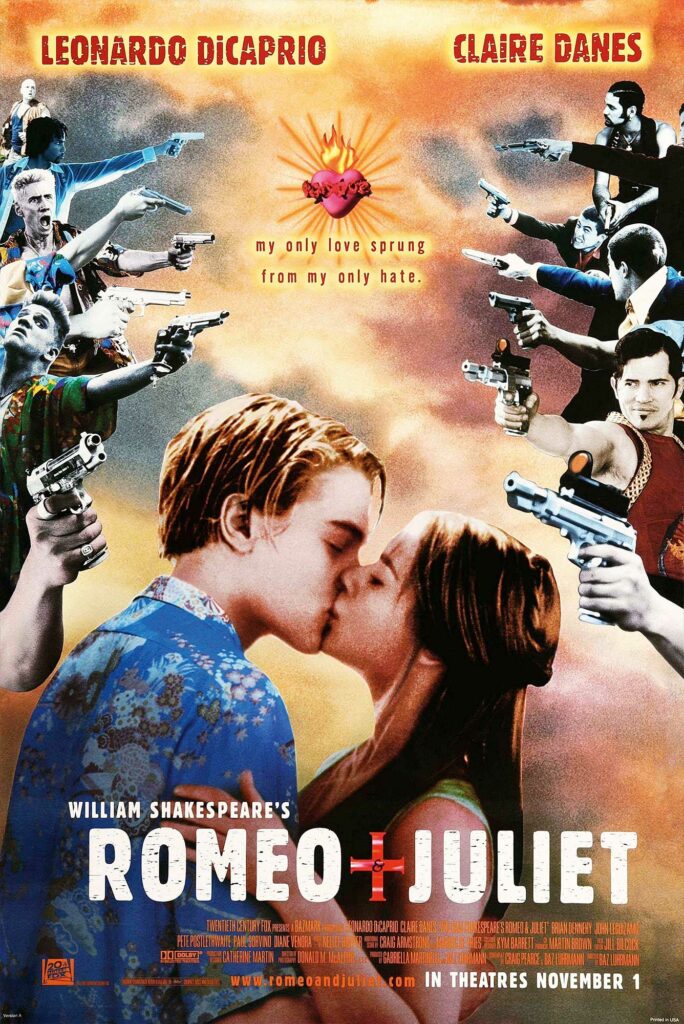
AP: Yes. It’s solving a riddle. And I think that is one of the crazy masochistic reasons why I keep working on another film is that it is that riddle, that creative riddle, between practicality and creativity – and how the two shall meet. It can take a lot out of you and also give you a lot of gifts, too, in the end.
CM: This is true. I have been criticised for saying this in the past, but I believe that what separates a designer from an artist is that a designer is problem solving. A design is about a situation that you’re presented with: whether it’s a script, a person or wet weather. And a director who’s explaining to you how they want the movie to be, and an actor that has certain views on their character, and your job is to thread the needle between all those people.
AP: Good point. What’s been the biggest challenge you’ve faced in all the films that you’ve worked on? Is there a particular scene?
CM: I think I was really nervous before filming the ‘68 special in Elvis because I saw all the clothes and it just really didn’t come together until I saw everyone in hair and makeup. I just thought, ‘what is this?’ It just felt so discombobulated. But then with hair and makeup it all came together. Hair and make-up is a really unsung department. They really can save you. Good hair and makeup is just invaluable for creating character and mood and bringing everything together. You know, that was pretty terrifying. And it’s what we shot first on Elvis.
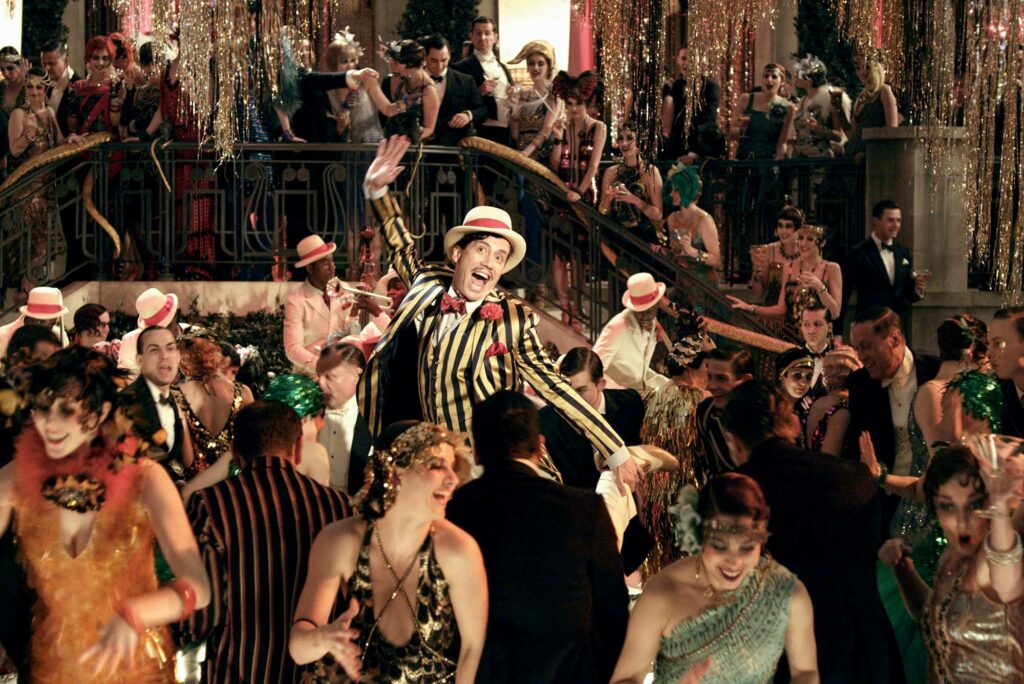
AP: You pulled it off. So great.
CM: Thank you. And when you think that was entirely shot in Australia. And it’s so under the skin, you can’t see it. So beautifully done. Yes, it was just that first day shooting the ‘68 special that felt like we had so much to lose. Ultimately, with all the more complex scenes we film, I just always feel so grateful when nothing explodes, no one gets hurt, the clothes stay on everyone, the work is good, everyone’s happy, the props worked… props are always my nemesis. Not so much the set dressing props – I love set dressing – it’s just those props that are handled by actors. It’s so interesting because someone like Leonardo DiCaprio or Hugh Jackman can get the worst prop, the prop that doesn’t work, and you’ll say to them, ‘can you just make this work? I’m so sorry this is a disaster. And I’m just terrible’. And they can, you know, they can basically bring an inanimate object to life. And then there are other people who can’t sign a check. And it doesn’t matter how many pens you bring them, just no pen works. You can have 7,000 pens and I can still hear my name being called over the radio to come to set.
AP: The same with a wardrobe malfunction, too. Some people are just able to handle it. When you’re working with a brilliant performer they know instinctively how to create the illusion. We’re all creating illusions. And Catherine, you are a master of this, your work is extraordinary.
Words by CATHERINE MARTIN/ARIANNE PHILLIPS
Introduction by JEREMY LANGMEAD
A Single Man / Once Upon A Time in…Hollywood / Joker: Folie à Deux / A Complete Unknown


